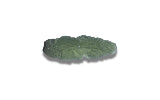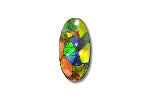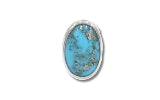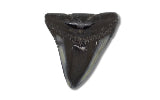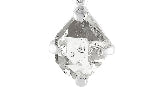METALS
Alloy
A mixture of two or more metallic elements.
Sterling Silver 925
Sterling Silver is an alloy made up of 92.5% pure silver and 7.5% copper. Pure silver is rarely used in jewelry because it is very soft, pliable, and more prone to tarnishing. However, sterling silver will still tarnish unless it is plated in a heavy metal such as rhodium, though it is very easy to clean and care for. A polishing cloth can be used to gently buff your sterling silver jewelry, removing tarnish and restoring shine. It is best not to submerge your jewelry in or use solutions as it can harm some stones.
Gold Plating
Gold plating is a method of depositing a thin layer of gold onto the surface of another metal. In most cases, the layer of gold is very thin, just enough to cover all exposed surfaces of the other metal. The benefit of gold plating for jewelry is that it gives the look of gold, but at a much lower price than solid gold. Gold plated rings cannot generally be resized, as this risks cracking or melting away the plating. Jewelry that has been gold plated should never be polished using a machine or cleaned using abrasives or dips.
Brass
Brass is an alloy (a mixture of two or more metallic elements) typically 60% copper and 40% zinc.
Vermeil
Vermeil is a type of gold plating that must be at least 2.5 micrometers and is typically coated over Sterling Silver.
Sterling Silver is an alloy made up of 92.5% pure silver and 7.5% copper. Pure silver is rarely used in jewelry because it is very soft, pliable, and more prone to tarnishing. However, sterling silver will still tarnish unless it is plated in a heavy metal such as rhodium, though it is very easy to clean and care for. A polishing cloth can be used to gently buff your sterling silver jewelry, removing tarnish and restoring shine. It is best not to submerge your jewelry in or use solutions as it can harm some stones.
Gold Plating
Gold plating is a method of depositing a thin layer of gold onto the surface of another metal. In most cases, the layer of gold is very thin, just enough to cover all exposed surfaces of the other metal. The benefit of gold plating for jewelry is that it gives the look of gold, but at a much lower price than solid gold. Gold plated rings cannot generally be resized, as this risks cracking or melting away the plating. Jewelry that has been gold plated should never be polished using a machine or cleaned using abrasives or dips.
Brass
Brass is an alloy (a mixture of two or more metallic elements) typically 60% copper and 40% zinc.
Vermeil
Vermeil is a type of gold plating that must be at least 2.5 micrometers and is typically coated over Sterling Silver.
STONE SETTINGS
Bail
A hoop-like attachment for a pendant that allows for a piece to be worn on a chain or cord.
Bale
See Bail.
Bangle
A rigid, non-flexible bracelet. Bangles can be solid to slip onto the wrist or hinged.
Bezel
A band, rim, or wall of metal that compresses and surrounds a stone while keeping the top of the stone visible. Some bezel jewelry has a solid backing while others have an open design.
Claw Setting
See Prong Setting
Filigree
A patterning of intricate, openwork twists, scrolls and curves; generally of wire.
Inlay
Stones which are cemented or inserted into the surface of another material or stone.
Pave
A setting technique in which multiple stones are set low and close together to create a paved appearance.
Peg Setting
A setting style in which a hold is drilled halfway into a stone, often a pearl, and a metal bar or post is inserted and secured with adhesive.
Prong Setting
A setting style in which a metal strip, bar or tube is shaped around a stone and actually touches the stone to keep it in place.
Shank
The hoop part of a ring that encircles the finger. Also sometimes called the band.
STONE CUTS
Cabochon
A facet-less style of cutting that produces a smooth, domed surface and a flat base.
Carat
Unit of measure for gemstone weight. One carat is equal to 200 milligrams.
Cushion Cut
A style of cutting that gives a pillow shaped appearance.
Doublet
A stone that is made up of two separate layers.
Etching
Removal of part of a metal surface by acid.
Facet
A flat cut or polish on the surface of a gemstone. A Faceted stone will have many facets cut at varying angles.
Finish
A term used to describe the texture of a metals. High polish, brushed and matte are examples of finishes.
Matte
A dull, non-reflective finish.
Rough
Uncut gemstones.
Inclusion
Any combination of bubbles, crystals, carbon spots, clouds, impurities or even cracks and abrasions within a stone. Often times inclusions cannot be seen unless under magnification.
Lapidary
A craftsman who cuts, facets, engraves or polishes gemstones.
MOHS Scale
A scale of mineral hardness, ranging from one to ten. Talc is a one on the MOHS scale, while diamonds are a ten.
Refraction
The bending of light rays as they pass through a gemstone.

